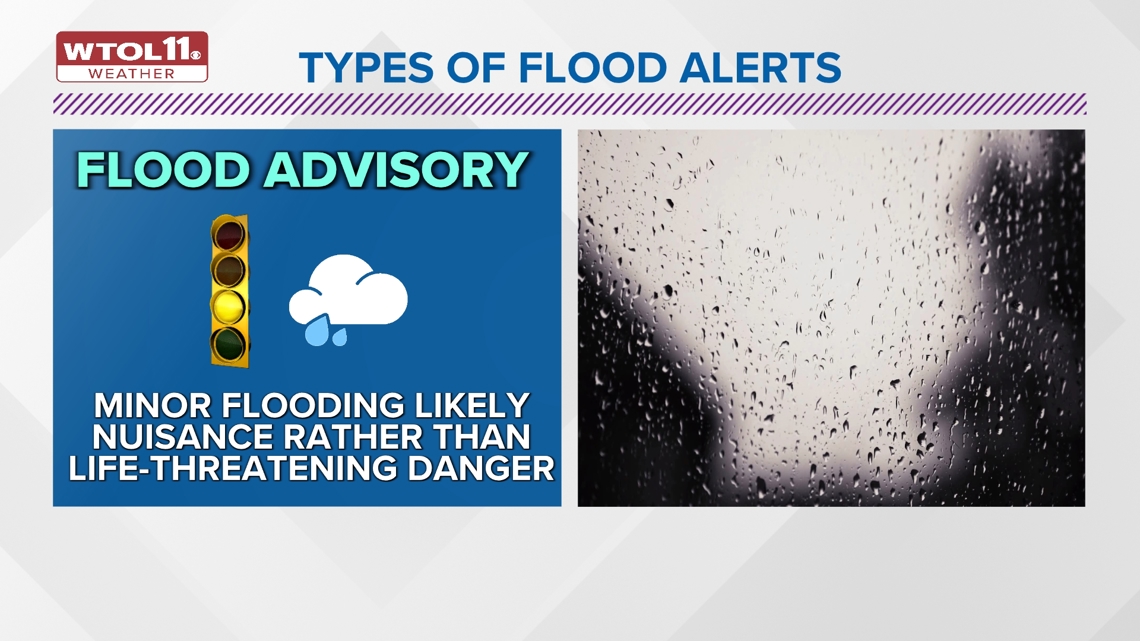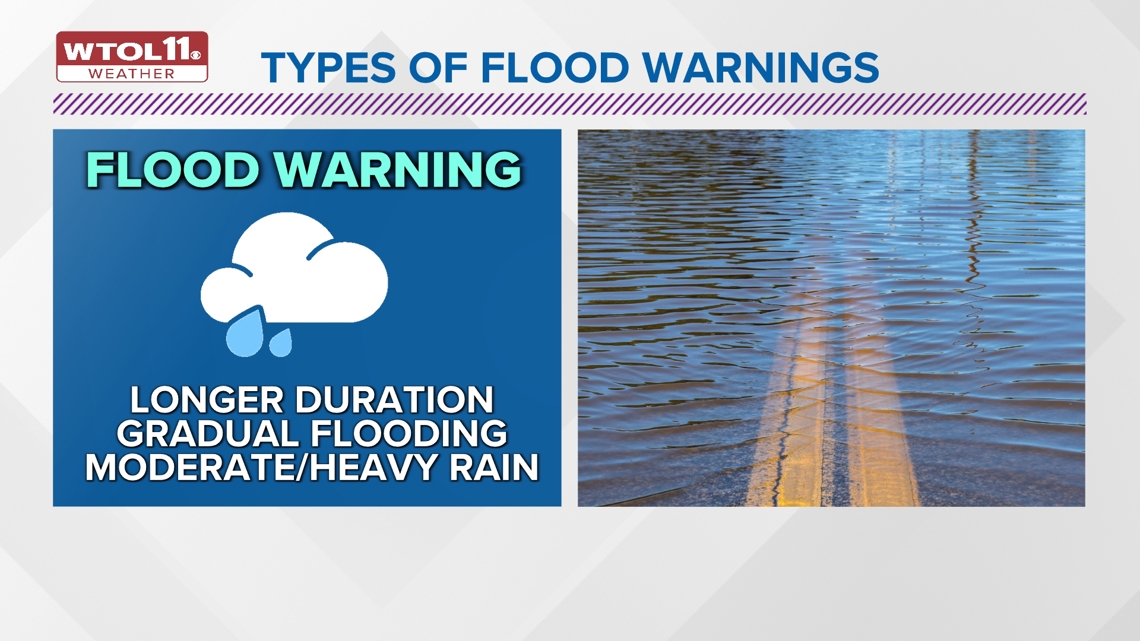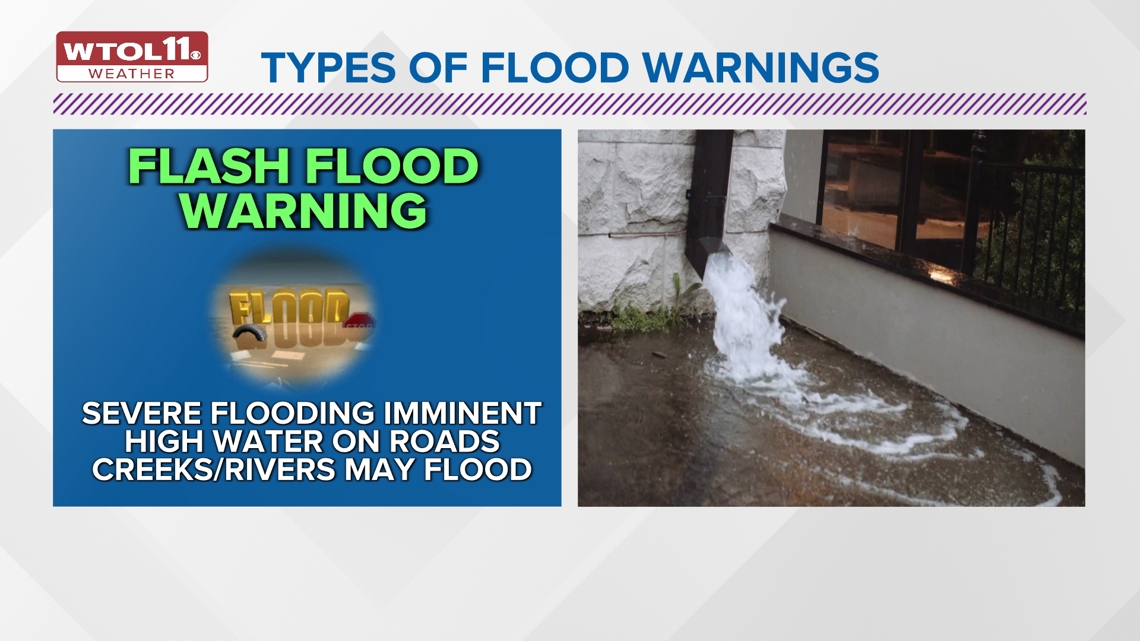TOLEDO, Ohio — "Turn around, don't drown" is a phrase you've probably heard countless times during heavy rain storms.
Heavy rainfall inundated northwest Ohio Wednesday afternoon, dumping widespread amounts between 2-4 inches. Flooding rain caused high water on roadways, leaving many drivers with no choice but to reroute.
During heavy rain events, the National Weather Service issues several varieties of flood alerts.
So, what are the different types of alerts?
Much like severe weather watches, flood watches are issued for the potential for future flooding that may impact the region over the course of the upcoming day. When a flood watch is issued, you can plan ahead for heavy rainfall that may impact your outdoor plans. Watches are designed to keep you ahead of the storm and prepare you for the impending impacts.
Warnings reflect a more imminent risk of flooding associated with active rainfall. The NWS issues several types of warnings to alert you about flooding risk. You can check the latest flood alerts for your area on the free WTOL 11 weather app and on-air.
Flood advisory


A flood advisory is issued when heavy rainfall may become an inconvenience to everyday activities such as driving and sporting events.
Flood advisories usually represent nuisance flooding that may require adjusting plans, but does not pose an imminent threat to life and property. Low-lying areas such as underpasses and parks next to rivers often experience high water during flood advisories. While standing water may spill into the curb lanes on roadways, most roads are passable with caution during flood advisories.
If rainfall intensifies, flood advisories may be upgraded to warning criteria.
Flood warning


A flood warning is issued to alert the public that flooding is ongoing and high water may impact driving and outdoor recreation.
During a flood warning, low-lying areas and locations adjacent to streams, creeks and rivers may experience standing water. Curb lanes on roadways as well as underpasses may be covered in standing water and pose a danger to drivers. But overall flood warnings represent more of an inconvenience than a life-threatening danger.
When rainfall intensifies and brings an immediate threat to life and property, a flash flood warning is issued.
Flash flood warning


Flash flood warnings represent incredibly rapid rainfall rates that inundate roadways, lawns and bodies of water with more rain than they can absorb. Standing water rises rapidly during flash flood warnings, presenting a danger to drivers with high water that may render some roadways impassable. During flash flood warnings, rainfall may flood homes and basements, posing a threat to property.
Overall, the threats associated with flash flooding are far greater than a regular flood warning. Flash flooding is often more of a short-lived threat that gradually dissipates once heavy rainfall eases up.
When flood alerts are issued, you can trust the WTOL 11 weather team for the latest information both on-air and online.
As Wednesday's storm system departs, showers will taper off by the evening hours, but localized flooding will remain possible. Stay safe and remember: "turn around, don't drown."

